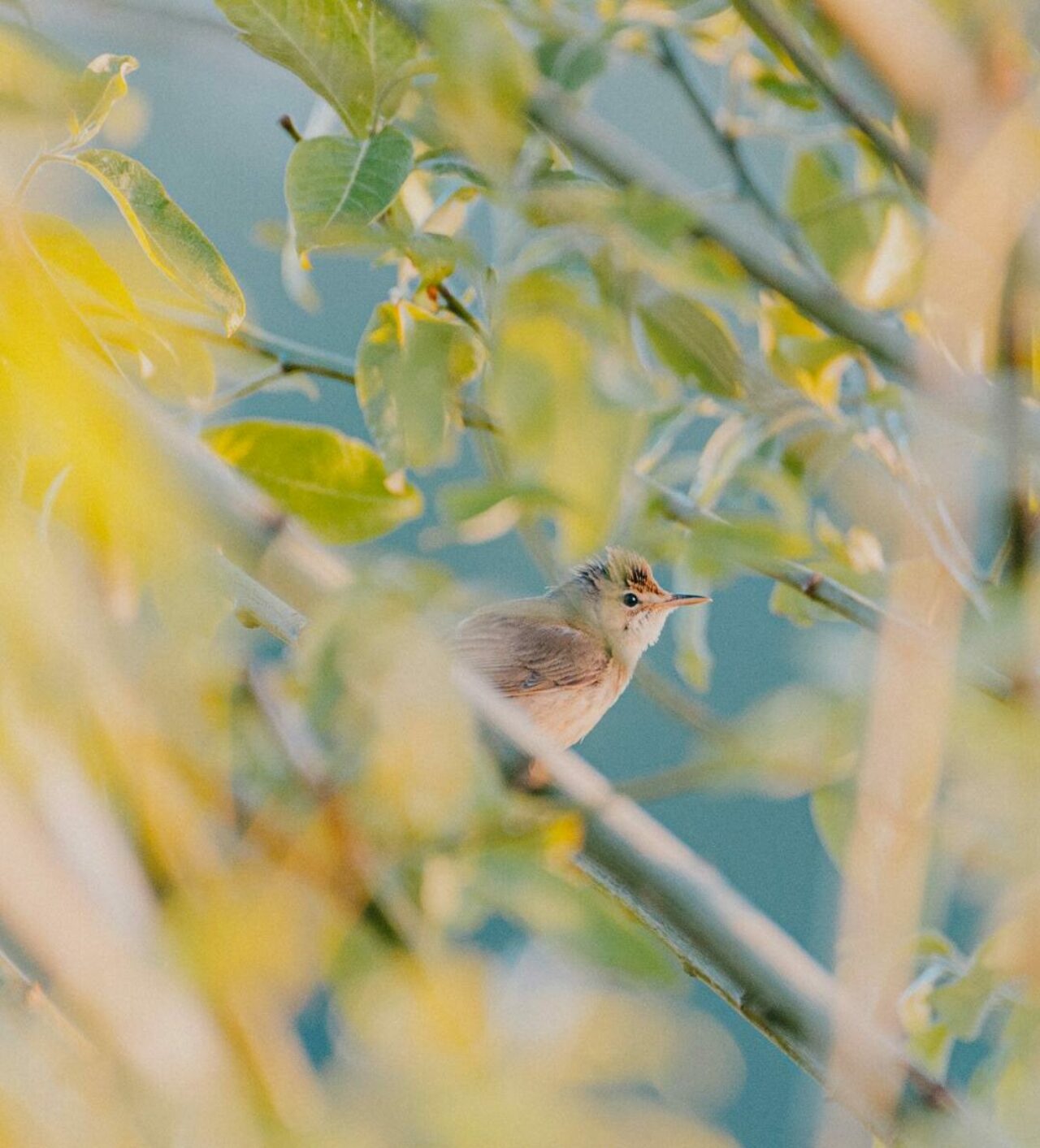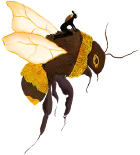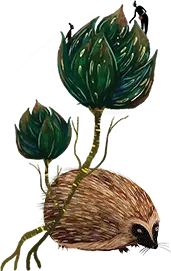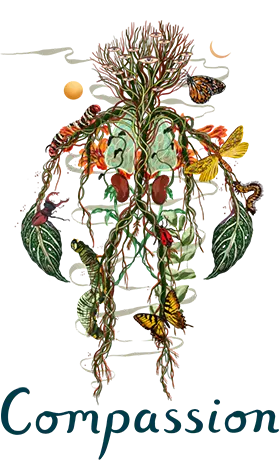
Notes on a Songbird – Sam Lee’s Nightingale playlist
Sam Lee discusses his connection to Nature.
For around a decade now, come springtime, Sam Lee (RWY Champion, Class of 2024) has regularly ventured into the woodlands of South East England in search of Nightingales. Here, in the fading light of the day, he not only basks in the melodious repertoire of our most notable songster, but joins them in song, often accompanied by friends and other folk musicians.
He also shares these magical experiences with lucky groups that take part in his guided Singing with Nightingales sessions, which you can book here.
Many of us have never knowingly heard this elusive songbird in ‘the wild’, limited instead to recordings, which is sadly not a surprise given that there are thought to be fewer than 5000 Nightingales in the UK now. There were once hundreds of thousands. Fortunately, for those who have yet to Sing with Nightingales, Sam wrote the wonderful, Nightingale: Notes on a Songbird (published in 2021), which the Guardian described as a “beautiful, lyrical, heartfelt book”. It captures not only Sam’s own passion and reverence for the species, but traces its significance across various cultures over thousands of years, including its appearance in song and folklore.
We asked Sam to create a playlist of his favourite Nature songs and he went one better, sharing with us a Playlist that accompanies his book.
It’s a diverse collection of music, featuring, or inspired by, the Nightingale, including ethnographic recordings and traditional standards from across the globe.
Below are a select few that Sam picked out for us to share. It also seemed right to share one of his own wonderful songs!
We hope you enjoy these odes to Nightingales and that it inspires you to seek out and enjoy the real thing come the spring.
The Tan Yard Side – Sam Lee
Sam Lee’s version of this traditional song, thought to originate from Ireland but widely sung throughout the British Isles for several hundred years, appears on his Mercury Nominated album, Ground of Its Own. Here, Sam combines a field recording of the Nightingale’s song with a sparse cello accompaniment and the hypnotic thrum of a shruti box. Over the top of this, Sam shares this tale of longing with his trademark rich and delicate baritone.
Who is the “angel bright, coming tripping down so low”, sung about with such tenderness and a hint of regret? In this version, Sam places the male Nightingale (it’s the males that sing) at the heart of the song, instead of as a side note (as in the original). The bird is even given space for a solo midway through the song, full of its characteristic whistles, short phrases and longer repeated ‘chugs’.
Nightingales don’t live long, so when Sam sings that “It is twelve long months since first we met, so early in the spring”, it is unlikely that you would hear the same bird a year later. Many birds will only sing for one season, but when they do, it will often be the same sweet song that successfully found them a mate the year before.
This tune is perhaps the closest you can get to experiencing the magic of a night with Sam and crew ‘Singing with Nightingales’, without being there yourself. So, stop what you’re doing, take a breath, close your eyes and enjoy.
Selfos (Nightingale) Demitrios Halkias
This song transports you to another time, another world. The recording itself is part of the ethnographic collection, ‘Why the Mountains Are Black: Primeval Greek Village Music”, a series of Greek Folk songs recorded in the first half of the 20th century. The Greek Demotiko music style dates back even further though, to Byzantine times, played with lute, greek bagpipe, the daouli drum, tambourine, violi, and the clarinet-like shawm, or pipiza. In This song, it is the pipiza whose manic high pitched melody dances over the drone like rhythm, doing a fine impersonation of the free song and diverse repeated phrases of the bird it is named after.
The Nightingale is prominent in Greek mythology, often linked to the tragic tale of Philomela, a princess who was transformed into a nightingale after a horrific act of violence. Through the bird’s song, she expresses her pain and sorrow, a symbol of resilience, and the power of art to heal.
Nothing can compete with hearing the bird itself of course, but this erie number captures the transcendence and melancholy of experiencing a late night performance in the shadows.
The Nightingale – Ruslan Jumabaev
After hearing the real thing in the Tan Yard Side, we have another track that, like Sefos before, does its best impersonation of the Nightingale song, this time using another traditional instrument from another corner of the world, the Komuz, the National instrument of Kyrgyzstan. This stringed instrument has no frets, so depends on the feel and virtuosity of expert players, such as Ruslan Jumbaev – a fitting parallel with the songbird itself.
Unlike the other tracks on this list, it is a solo piece, so in some ways is the truest representation of the birds’ song yet. It has in fact been described as a “sound portrait of the birds’ voice”, with a recognisable continuous flow of unpredictable and unique short phrases.
In the art, music and folklore of Central Asia, the Nightingale is again another recurring image and symbol, fit for such fine imitation and tributes such as this piece.
La Rosa Enflorese: Los Bilbilicos Cantan – Eduardo Paniagua
Most bird song is love poetry, as the male attempts to woo a mate. With that in mind, the Nightingale is the Keats or Blake of the songbird world: a romantic monogamous, full of emotion, complex phrases and inner rhythms. Unsurprisingly, these traits make the Nightingale also the subject of much poetry, including in the last few verses of this song, La Rosa Enflorese:
The nightingales sing,
Their gentle sighs of love,
My soul, my very being,
So helpless in your spell.
The nightingales sing
High among the flowering trees
While those resting in their shadow
Know only of love’s pain.
Like the other songs here, the tone of the song is melancholic, a “sigh of love”, channeling “loves pain”. The music is in the Shepardic style, and again takes us back in time, this time to Southern Spain, and what was once Al-Andalus. It is a musical style created by the Shepardim, Jews, descendents of those exiled from the Iberian Peninsula during The Moors occupation of Spain from 711 AD. The result is a mix of Flamenco and Arabic rhythms, and a love ballad played expertly on the lute to a simple drum beat.
“Ti zwazo” or “Little Bird” – Frantz Casseus + Lolita Cuevas
All the songs so far have been inspired by the common nightingale, (Luscinia megarhynchos), however this next song, Little Bird, sung by Lolita Cuevas and played by guitarist Frantz Casseus, is in fact a version of a well known Haitian lullaby, “Ti zwazo”, which means little bird in Creole. The nightingale we are most familiar with is a summer migrant from Sub-Saharan Africa. While its range extends throughout Europe, any common Nightingale found in Haiti would be well and truly lost! It isn’t clear exactly what species the Nightingale and “little Bird” referred to in this song is, but my best guess would be another bird with a beautiful song, such as the Northern Mockingbird or Prairie Warbler.
Our Nightingale in question might differ, but this catchy fluttering melody, in the Twoubadou Haitian folk style, is clearly inspired by bird song. The song itself is a little more sinister, and is in fact a staple in the curriculum of many Haitian pre-schools. In the song, the little bird is warned not to fly to Fiyét lalo’s house, a bogeywoman who eats children – a fable on ‘stranger danger’!
The last third of the song shifts in tone to a minor lament, reflecting that same sense of longing and sadness as the Tan Yard Side and La Rosa Enflorese. Although the song of birds brings us great joy, it is clear that they touch other shades of our heart also, light and dark, and a study and celebration of their song connects us to our own emotions.

Join Our Community...
Sign up for stories, tips and inspiration from around the globe.









